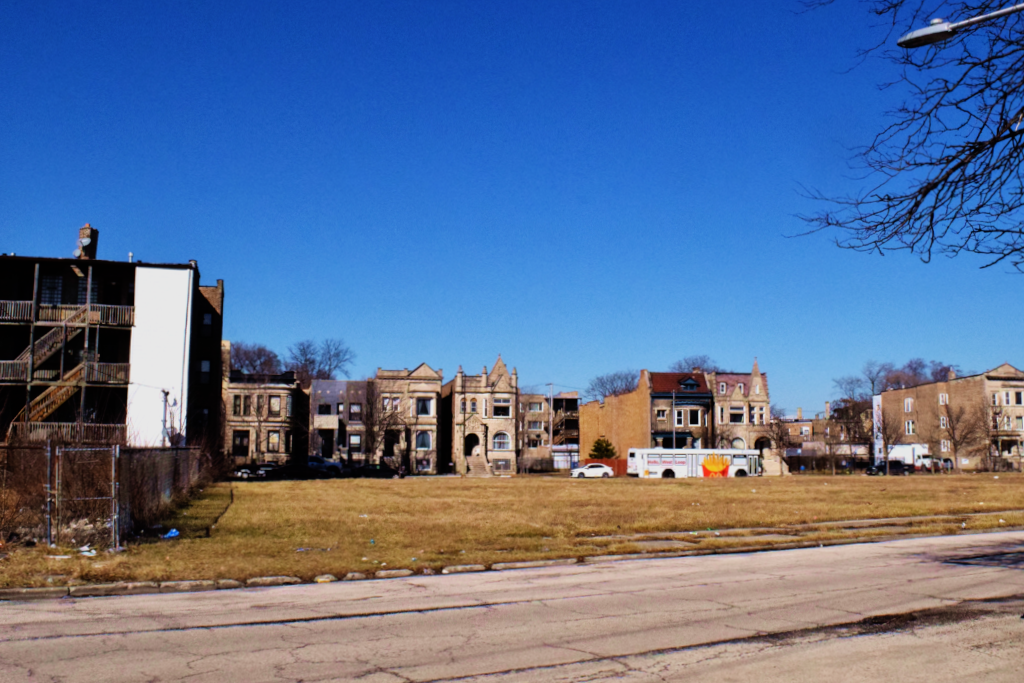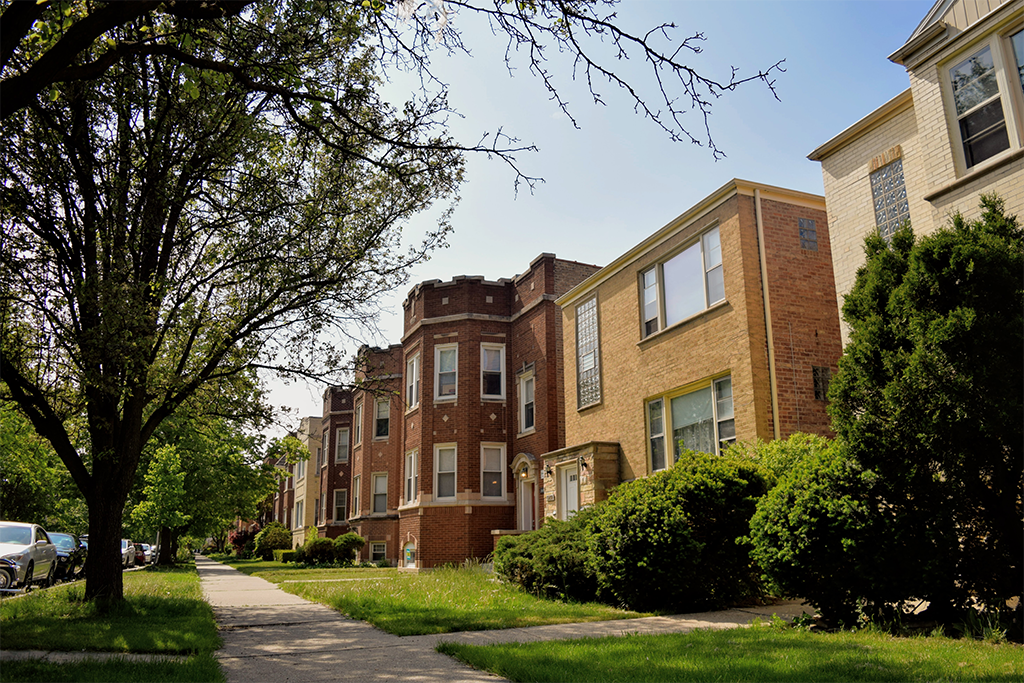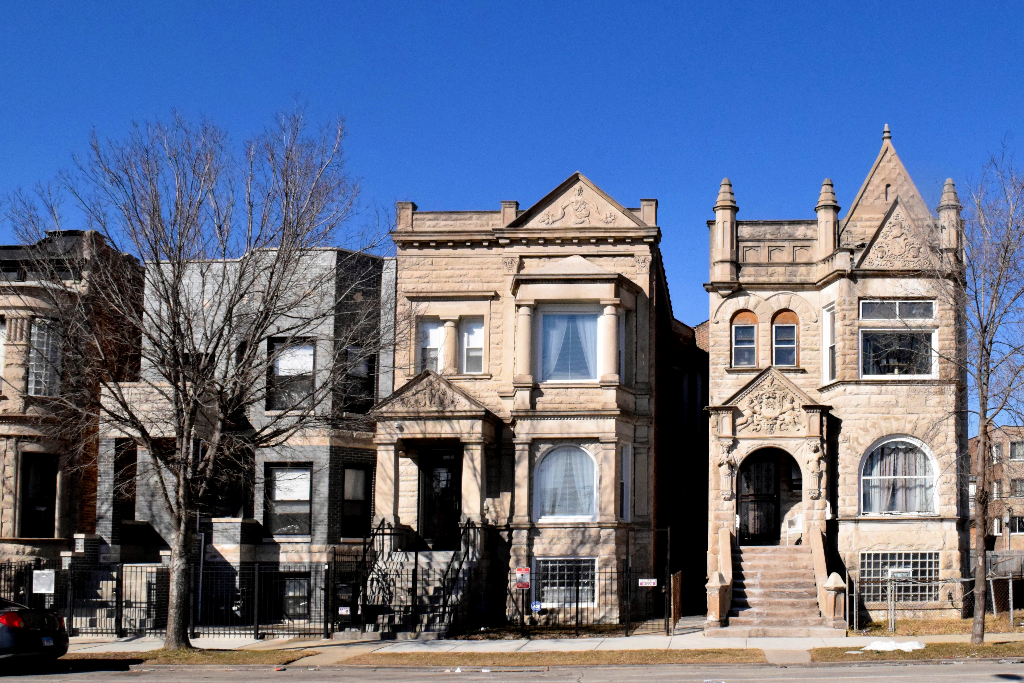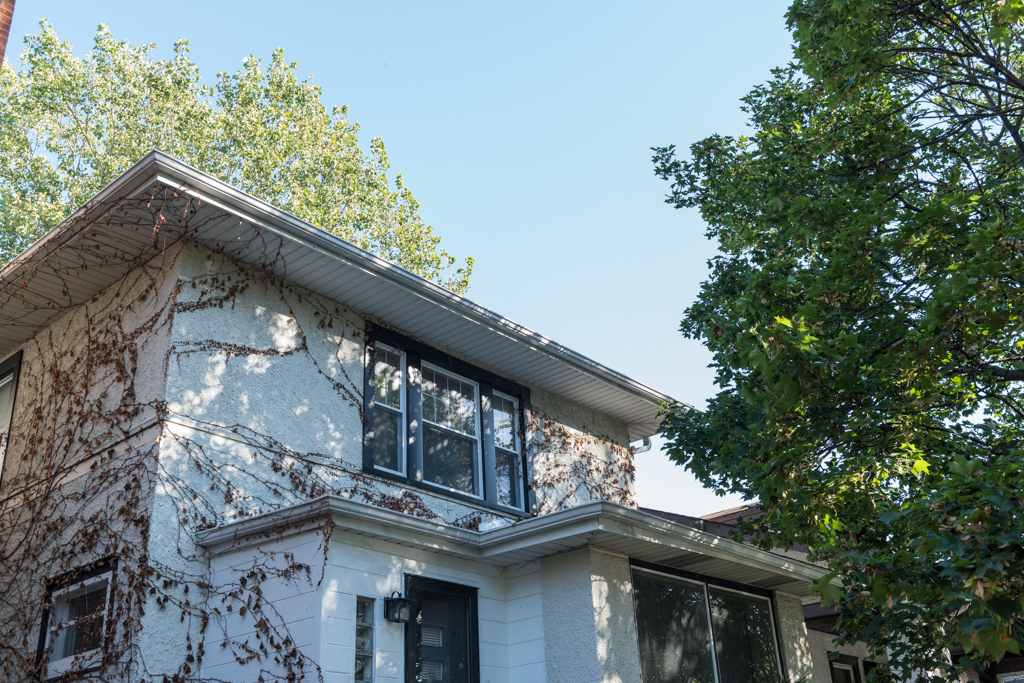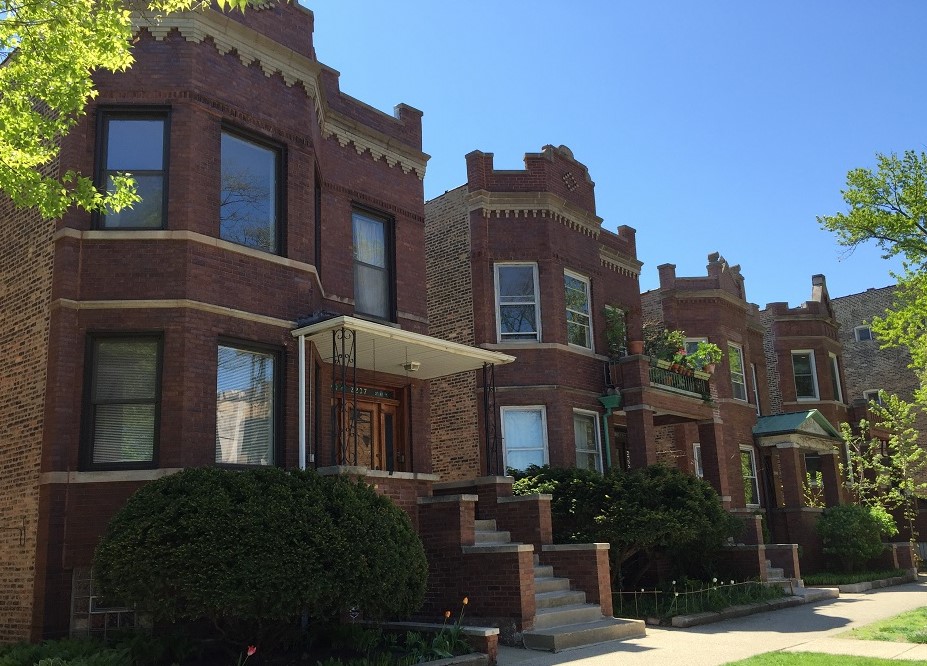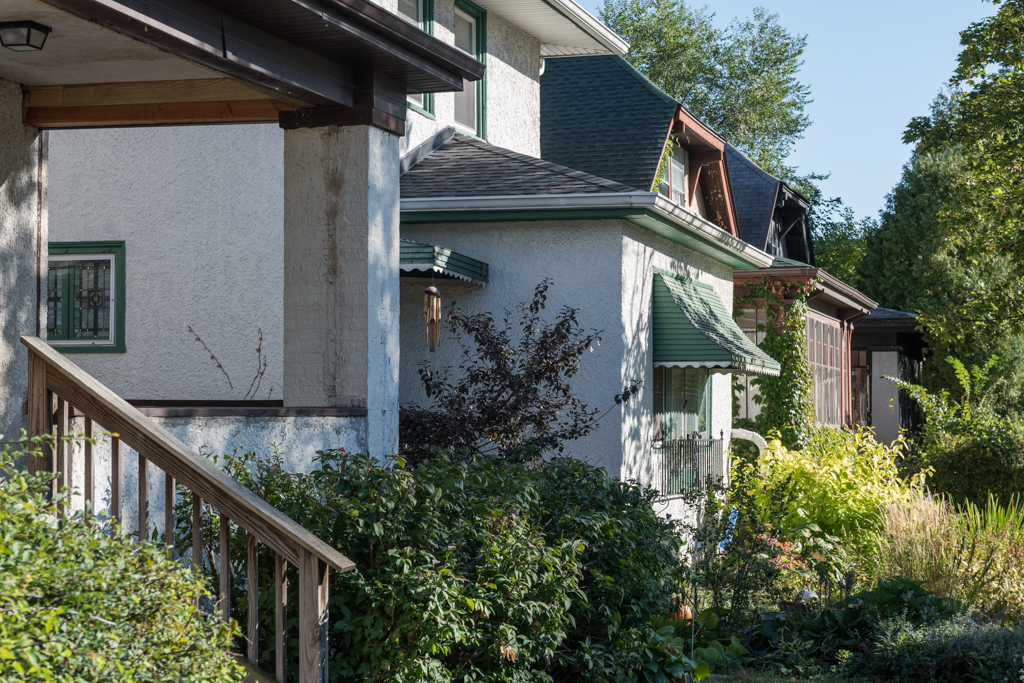Photo: Evelyn Ryan
Recent IHS research has focused on the housing policy implications of the growing older adult (aged 65+) population in the City of Chicago and suburban Cook County. To build on this research, IHS engaged in discussions with local practitioners on a range of topics affecting older adult housing needs. A key issue that emerged from these conversations is the critical importance of estate planning vehicles to support the cost-effective and timely transfer of an older adult’s home to their heirs. This issue has a broad set of implications, ranging from supporting the development and transfer of generational wealth to mitigating the risk of tangled title situations that can lead to property deterioration and abandonment. This data brief examines the role that transfer on death instruments (TODIs) play in facilitating the transfer of real estate to heirs and provides data on the patterns of TODIs filed on homes with an active senior exemption in neighborhoods across Chicago and Cook County.
Background
The ability to transfer ownership of a property to an heir upon the death of the existing owner is something that many may take for granted as a basic part of the estate planning process. However, this process can be expensive, legally complicated, and difficult for those with limited income or mobility to navigate. Because of these complications, many adults lack a will, the most common estate planning tool. A 2021 Gallup poll found that roughly 24 percent of respondents aged 65 and older and nearly half of respondents aged 50 to 64 did not have a will. The poll also noted significant variation in the use of wills by respondent race and income with over 70 percent of non-white adults and 70 percent of lower-income adults not having a will.
A will can simplify the disposition of a person’s estate to their heirs. However, in Illinois, the presence of real estate automatically triggers probate or judicial review. Probate can be costly, time-consuming, and have significant implications for property management and maintenance. A common tool used to avoid probate court and potentially mitigate costs such as estate taxes is for the homeowner to place ownership of a property into a land trust. While land trusts can simplify the succession planning process for real estate, establishing a trust can be expensive, as the process requires legal counsel, maintenance fees, and filing fees. Trusts are also usually more difficult to revoke if the owner seeks to make any changes. Another approach to avoid probate is to hold a property in joint tenancy with rights of survivorship. Joint tenancy adds the heirs’ names to the existing property title, making them co-owners of the property. While this approach also avoids probate, it introduces other complexities; for example, the added titleholders would have equal ownership rights to the existing owner, even before the original owner passes. Adding a joint tenant also exposes the property to potential debts of the added owners.
These approaches have complications, though the absence of any planning tool can be even more complex. Without an estate planning vehicle in place, a property can end up in a tangled title scenario – a state of legal limbo where there is no clearly defined heir or owner in charge of the property. While family members can occupy a property that lacks a clear title, the absence of legal ownership means that no one has clear decision-making authority for the property. Occupants are unable to access existing home equity to potentially invest in the property, access certain home improvement grants that require proof of ownership, or sell the home to a new owner. If multiple heirs attempt to claim a property, the dispute may need to be resolved in court, which makes the process more costly and time-consuming.
While these types of scenarios are being resolved, a property’s condition can deteriorate or even contribute to neighborhood disinvestment. A property that remains unoccupied during this process can degrade during the waiting period without a clear owner to take responsibility for maintenance. This process can reduce the value of the property and make it more difficult and expensive for an heir or a new owner to rehabilitate it once they take possession. Vacant houses can have negative effects on a neighborhood, and, in some areas, properties without clear heirs make up a significant number of vacant homes in some communities. These conditions can contribute to growing challenges related to vacancies, diminish local tax bases, reduce neighborhood property values, and limit the overall available housing supply. In addition, research from cities such as Philadelphia, Atlanta, and St. Louis has highlighted how problems associated with a lack of clear property ownership have disproportionately affected predominantly Black communities and perpetuated the impact of discriminatory housing policies on these neighborhoods.
Transfer on Death Instruments
Transfer on death instruments (TODIs) have gained traction nationwide in recent years as an affordable and straightforward estate planning tool that can be used by a wide range of homeowners, including owners of 1 to 4-unit properties and homeowners of any age. Currently, 29 states, including Illinois, have implemented legislation allowing for the use of transfer on death deeds.
TODIs have been available in Illinois since 2012 when the state enacted the Illinois Residential Real Property Transfer on Death Instrument Act. In 2022, the Illinois Transfer on Death Instrument Act expanded the availability of TODIs to all kinds of real estate, including farm, commercial, industrial, and recreational properties. However, TODIs on residential properties are restricted to 1 to 4 unit buildings and condominium units, meaning that buildings with 5 or more units are not eligible.
The primary function of a TODI is to transfer property from a deceased grantor to an heir without a lengthy and expensive probate process. TODIs allow the homeowner to identify the beneficiary that will receive their property upon their death via a simple legal recording. A TODI filing allows a property transfer to occur immediately upon the owner's passing, skipping delays that can occur during the probate process. Compared to establishing a land trust, they offer cost savings to the homeowner by only requiring the cost of recording the document. They also provide legal flexibility by allowing the property owner to modify or revoke a TODI simply by recording a new and updated TODI.
In Illinois, TODIs do not grant any benefits or rights to the beneficiary during the homeowner’s lifetime, meaning that they can be revoked or altered without any legal impact. They also do not impact the homeowner’s ability to sell the property or hinder the rights of the homeowner’s creditors and lien holders. Beneficiaries of TODIs who take title then assume the responsibilities for all liens and interests of the property at the time of the homeowner’s death.
Although TODIs are generally simpler and more accessible than trusts or wills, older adults may still need additional support when navigating the drafting and recording process. Local legal aid agencies provide support and free-of-cost services to low-income residents who are either elderly or who have permanent disabilities.
Data Analysis
To better understand the extent that TODIs have been adopted by older adult homeowners in Chicago, IHS analyzed data from the Cook County Clerk to determine the total number of TODIs filed and the number of properties where at least one TODI had been recorded between 2012 and 2022. Because older adult homeowners are the most likely to benefit from and need access to a cost-effective estate planning tool like a TODI, IHS also identified properties with an active senior exemption. From this universe, the analysis calculates the share of properties with a senior exemption where a TODI has been filed and examines patterns based on the income level and race/ethnic composition of census tracts across the county.i
Between 2012 and 2022, nearly 30,000 TODIs were filed on residential properties in Cook County. Figure 1 illustrates that since being introduced by the Illinois Residential Real Property Transfer on Death Instrument Act in 2012, the number of TODIs filed has steadily increased each year except for 2020. This lull in TODI-filing activity was likely due to limited access to facilities and longer processing times for all recorded documents in the early part of the pandemic. In 2022, over 6,100 TODIs were filed on residential properties in Cook County. Just over 55 percent of these TODIs were filed in suburban Cook County and just under 45 percent were in the City of Chicago. While there were roughly 30,000 TODIs filed between 2012 and 2022 in Cook County, these TODIs were recorded on roughly 26,500 unique properties. For several reasons, multiple TODIs can be recorded for the same property, such as when the property owned files a new TODI to update beneficiary information.
Figure 1. Annual TODI Filings on Residential Properties in Suburban Cook County and the City of Chicago, 2012 to 2022
TODIs are far more likely to be recorded on properties with an active senior exemption. While there is no specific information available on the age of a property owner filing a TODI, the presence of an active senior exemption can provide some indication if a property is owned and occupied by an older adult. While any property owner can file a TODI, a priority audience for TODI outreach is an older adult homeowner in need of estate planning resources. As shown in Figure 2, properties with a TODI are far more likely to also have an active senior exemption when compared to the broader residential parcel universe. In Cook County, just over 21 percent of residential parcels have an active senior exemption, but 48 percent of the residential properties with a TODI have a senior exemption. A similar pattern is seen in the City of Chicago and suburban Cook County.
Figure 2. The Share of Residential Parcels that have an Active Senior Exemption and the Share of Senior Exempt Residential Parcels with at Least One TODI Filing 2012 to 2022, Tax Year 2021
TODIs are more commonly filed on senior-exempt properties in modest-income communities. Given that one of the key benefits of TODIs is their relative affordability compared to other estate planning tools, older adult homeowners in low- and moderate-income neighborhoods are more likely to use TODIs than those in other neighborhoods. Figure 3 shows the share of residential properties and properties with a senior exemption countywide that are connected to a TODI filing by neighborhood income level. There is little variation in TODI-filing for all residential parcels by neighborhood income level. Just under two percent of residential parcels in Cook County and all neighborhood types have a TODI. However, four percent of residential parcels with a senior exemption have one. Additionally, five percent of residential parcels with a senior exemption in low- and moderate-income areas have a TODI, the highest level of TODI filing for any type of tract by income.
Figure 3. The Share of Residential Parcels that have an Active Senior Exemption and the Share of Senior Exempt Residential Parcels with at Least One TODI Filing 2012 to 2022, by Neighborhood Income Level, Tax Year 2021
Similarly, TODIs are more likely to be associated with residential properties in Chicago’s predominantly Black communities. Black communities have a complex and troubled history of tangled titles. Therefore, these neighborhoods are frequently the focus of efforts to raise awareness of TODIs and to provide legal support for older adult homeowners interested in filing TODIs. Data indicate that these efforts have in many ways been successful. Figure 4 shows that just under three percent of residential properties in Cook County’s Black communities have a TODI, compared to 1.8 percent for all residential properties countywide. The patterns are even more stark for residential properties with a senior exemption. Nearly seven percent of properties with a senior exemption in Cook County’s Black neighborhoods are associated with a TODI compared to four percent countywide. Conversely, the lowest level of TODI-filing activity for all residential properties overall is seen in majority-Latino communities, and TODI filing levels for properties with a senior exemption in Latino communities is lower than the county average. Figure 5 maps the share of properties with both a senior exemption and a TODI filing for Chicago Community Areas and suburban Cook subregions. The map illustrates that the highest share of these parcels is in predominantly Black communities on Chicago’s South Side and in south suburban Cook County. Go here for a full-page view if the interactive map. Click on a Chicago Community Area or suburban Cook County region for additional data.
Figure 4. The Share of Residential Parcels that have an Active Senior Exemption and the Share of Senior Exempt Residential Parcels with at Least One TODI Filing 2012 to 2022, by Neighborhood Race/Ethnic Composition, Tax Year 2021
Figure 5. The Share of Residential Parcels that have an Active Senior Exemption with at Least One TODI Filing 2012 to 2022, Tax Year 2021
TODIs are associated with a fairly small number of residential parcels in Cook County. Even in areas with the highest levels of filing activity, residential parcels with a TODI represent a small share of the overall parcels. Nearly seven percent of properties with senior exemptions in Cook County’s Black neighborhoods have a TODI, which is high compared to other neighborhoods, but the overwhelming majority of properties in these neighborhoods still do not have a TODI. While many of these properties may have other estate planning vehicles in place, these low rates of TODI filings indicate an opportunity and need for continued TODI outreach and awareness.
Discussion
TODIs are a useful, cost-effective tool to simplify the estate planning process for lower-income homeowners and ensure that their properties don’t end up in tangled title situations. Data show steady growth in the use of TODIs since 2012, and TODI-filing activity is most common among older adults, particularly those in low- and moderate-income communities and Black communities. Despite encouraging trends and patterns of TODI-filing activity, levels of TODI-filing lag in majority Latino communities. Overall, residential parcels with a TODI still represent a relatively small share of total parcels, indicating opportunities and a need for ongoing outreach.
TODIs are a legal tool that can support broader policy goals such as promoting the transfer of generational wealth and preventing property deterioration, vacancy, and abandonment, but there are limitations to what TODIs can accomplish by themselves. For example, property conditions or other factors may limit an heir’s interest in taking ownership or responsibility for a property. In other cases, an heir may want the home but have no experience as a homeowner. An important challenge for older adults who may consider using TODIs is identifying an heir interested in assuming ownership of the property, but also ensuring they have access to financial and logistic resources needed to be a successful homeowner. Issues such as beneficiaries not living in the area, not having the financial resources to maintain the home, or facing health challenges of their own may complicate the use of TODIs as a succession planning tool. Additionally, properties may have experienced years of deferred maintenance and require additional investment to maximize the value and livability of the property. In these situations, existing owners and heirs may benefit from homeownership training, housing counseling, and specialized financial products to support the successful transition of the home to a future generation.
Work on this project was generously funded by the RRF Foundation for Aging. Several organizations helped IHS gain a better understanding of 1) the importance of transfer on death instruments (TODIs) for estate planning purposes; 2) ongoing efforts to increase the usage of TODIs in Chicago neighborhoods; and 3) the technical details related to TODIs and the estate planning process. IHS would like to thank the Center for Disability and Elder Law, Neighborhood Housing Services of Chicago, and community partners with the City of Chicago’s Micromarket Recovery Program for sharing their insights.

